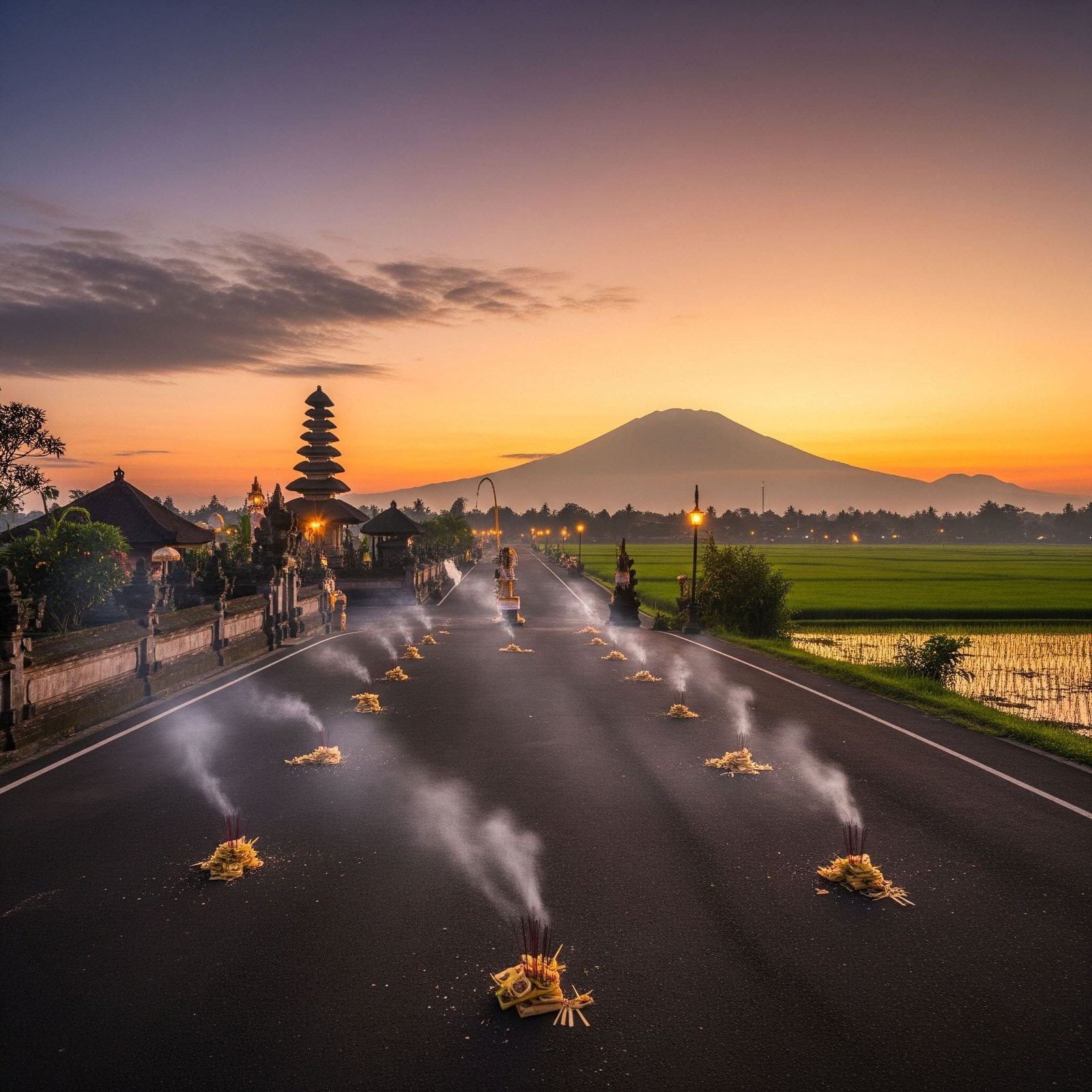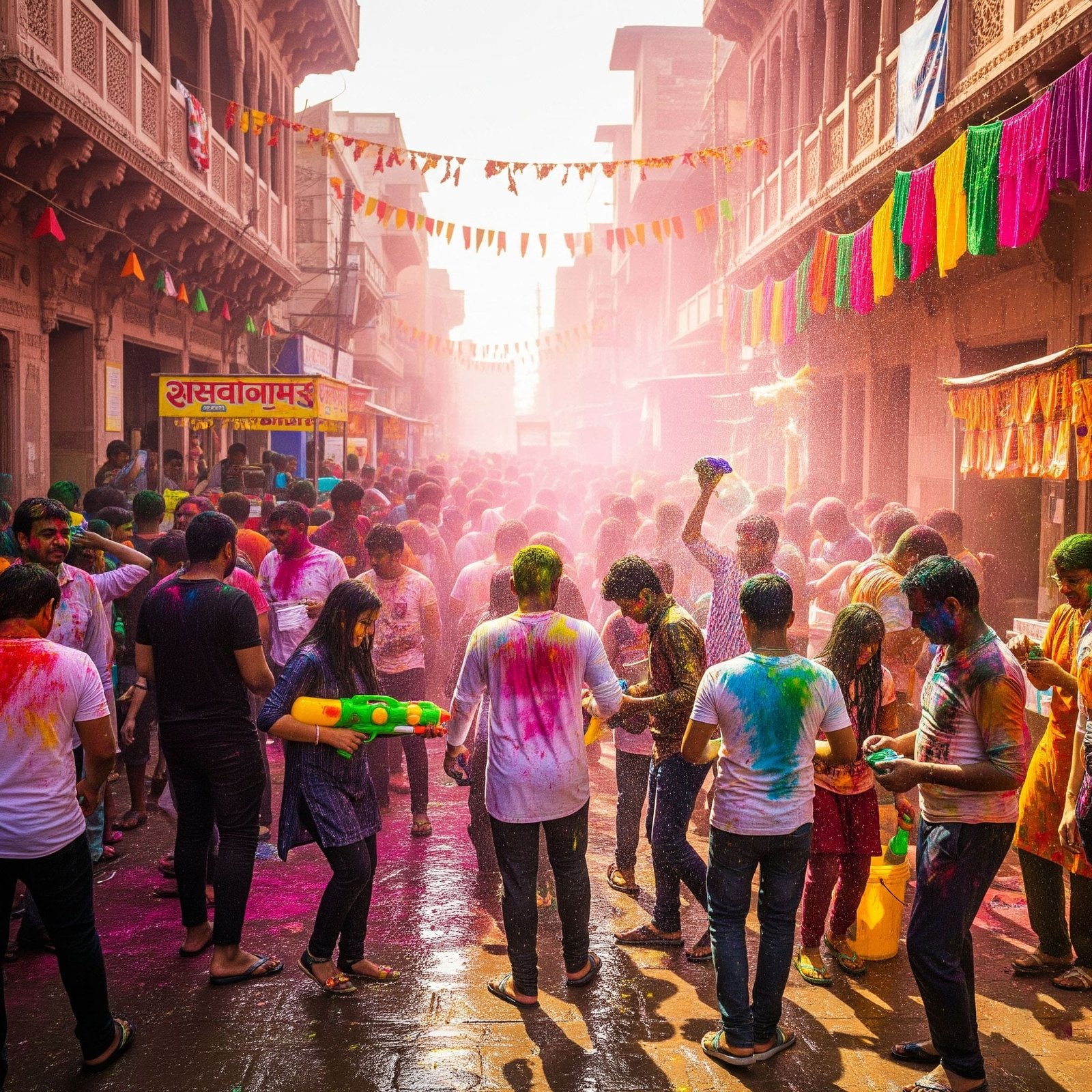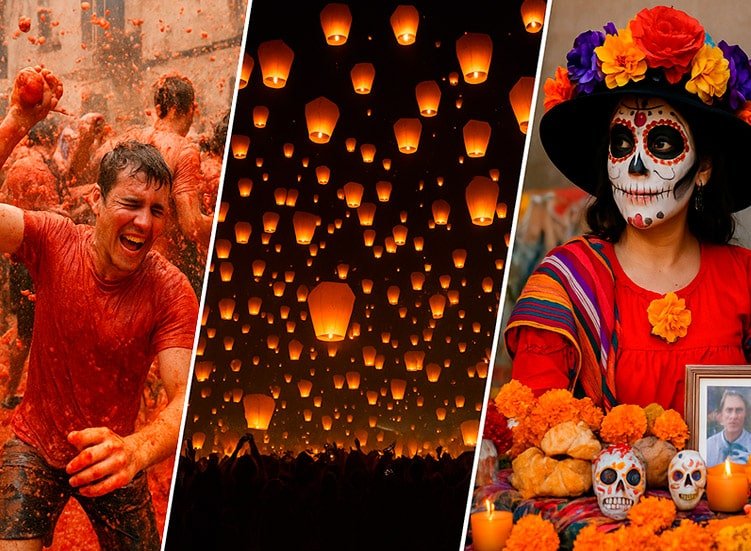Exploring curious cultural habits around the world is a fascinating way to understand human diversity. Each region, community, or country has unique customs that may seem strange at first glance but carry deep meanings and ancient histories. From daily practices to rituals and festivals, these habits reveal how different societies structure life, celebrate culture, and strengthen their identities.
In this article, we will detail the most interesting curious cultural habits around the world, explaining their historical, social, and anthropological context, as well as providing tips on how you can experience or learn more about these traditions without physically traveling.
What are curious cultural habits and why do they exist?
Curious cultural habits are practices, customs, or traditions that stand out for their uniqueness compared to the global norm. They can involve food, greetings, clothing, religious rituals, or celebrations. These practices exist to transmit values, reinforce collective identity, preserve traditions, and often serve as social cohesion.
For example, in Japan, a deep bow is not just a polite gesture: it demonstrates respect, hierarchy, and social connection. In contrast, in Western countries, a firm handshake serves a similar function but with different symbolism. What is common to some is surprising to others—and that’s what makes cultural habits so curious.
Curious cultural habits related to food
Food is one of the most visible and surprising cultural manifestations. Many curious cultural habits regarding food reflect climate, geography, religious beliefs, and history.
Insects as delicacies
In countries like Thailand, Mexico, and Cambodia, insects such as crickets, grasshoppers, and scorpions are consumed as protein-rich snacks. For locals, it’s a traditional nutritious source, while visitors often find it strange. The practice dates back to meat scarcity in certain regions and the appreciation of sustainable ingredients.
Differentiated teas and coffees
In Tibet, yak butter tea is an ancient tradition that keeps the body warm at high altitudes. In Ethiopia, coffee is part of a complex social ritual called the “coffee ceremony,” which involves roasting, brewing, and preparing coffee in front of guests, symbolizing hospitality and respect.
Fermented foods and intense flavors
Kimchi in South Korea and surströmming in Sweden are examples of fermented foods with extremely strong flavors. These eating habits are curious but reflect traditional preservation methods and cultural values tied to food.
👉 For those who wish to experience this without traveling, there are great YouTube channels that teach many international recipes in a practical and objective way, such as the Food Wishes channel (chef John’s clear, step-by-step videos covering a wide range of world cuisines) and the Tasty channel (short, visual recipe videos that make it easy to try international dishes at home).
Curious traditions in festivals and celebrations
Popular festivals often intensely highlight curious cultural habits, combining ritual, fun, and cultural identity.
La Tomatina (Spain):

La Tomatina is a famous tomato fight held in the town of Buñol, in the Valencia region of Spain.
The festival began in 1945 during a local parade, when young people spontaneously started throwing tomatoes at each other.
Today, it takes place annually on the last Wednesday of August, attracting thousands of participants from all over the world.
It is a fun and chaotic event, turning the town into a sea of tomatoes.
Lantern Festival (Taiwan):

The Lantern Festival in Taiwan celebrates the arrival of the Lunar New Year. Its origins date back to the Han dynasty, over 2,000 years ago, when lanterns were used to illuminate temples and ward off evil spirits.
The event takes place on the 15th day of the first month of the lunar calendar, usually between February and March. Thousands of lanterns are released into the sky, symbolizing renewal, hope, and wishes for good luck.
Nyepi (Bali, Indonesia):

Nyepi, the “Day of Silence,” is the Balinese New Year according to the Saka calendar. It began centuries ago as a Hindu ritual for purification and introspection. The date varies according to the Indonesian lunar calendar, generally in March.
For 24 hours, the entire island of Bali remains silent: airports close, streets are empty, and residents avoid any social activity, focusing on personal and spiritual reflection.
Day of the Dead (Mexico):

The Day of the Dead is a Mexican tradition that combines indigenous and Catholic elements, dating back to pre-Columbian civilizations like the Aztecs.
The celebration takes place on November 1st and 2nd, when families build altars with photos, candles, food, and offerings to honor their ancestors.
It is a colorful and joyful event, full of parades, decorative skulls, and festivities that reinforce family and cultural ties.
Holi (India):

Holi is India’s traditional festival of colors, celebrating the arrival of spring and the victory of good over evil. Its origin dates back to ancient Hindu rituals, with over 2,000 years of history.
The festival takes place on the last full moon of the Hindu month of Phalguna, generally in March. During Holi, people throw colored powders at each other, sing, dance, and share typical foods.
Carnival (Brazil)

And of course, we couldn’t leave out the beloved and famous CARNIVAL in Brazil.
Brazilian Carnival is one of the most famous festivals in the world, with roots combining European and African traditions. It emerged in the 19th century and consolidated as a major popular celebration in the early 20th century.
The date varies according to the liturgical calendar, occurring 40 days before Easter, generally in February or March. It is known for samba school parades, street blocks, elaborate costumes, and infectious music.
Curious daily customs
In addition to major festivals, curious cultural habits permeate daily routines, from small actions to common behaviors in certain countries.
- Removing shoes upon entering a home: Common in Japan, Turkey, and Finland; represents respect and hygiene.
- Public baths: In Japan, onsen are places for hygiene, relaxation, and socializing.
- Tipping: Essential in the US, but unnecessary or even undesirable in Japan, showing differences in social etiquette.
- Eating with hands: A traditional practice in India, parts of the Middle East, and Africa, seen as a sign of connection with food.
- Culture of silence on public transport: In Japan and Sweden, it is considered impolite to talk loudly on trains and buses.
- Formal greetings and titles: In countries like South Korea and Germany, using titles and formal greetings is not just etiquette but part of the social structure. Addressing someone too informally can be seen as disrespectful, even in seemingly everyday situations.
- Drinking butter tea (Tibet and Mongolia): Known as po cha, it is tea made with yak milk butter and salt. This energizing drink helps withstand the intense cold of the mountains.
- Sleeping in capsules (Japan): Capsule hotels offer tiny spaces, with just enough room to lie down and rest, reflecting the efficiency and practicality of Japanese culture.
- Applause upon airplane landing (Eastern European and Latin American countries): It is common for passengers to clap when the plane lands safely, a custom that can surprise travelers from other parts of the world.
- Plate smashing at weddings (Greece): During celebrations, plates are smashed to ward off evil spirits and bring luck to the couple.
- Hot wine soup for breakfast (Germany, Austria, and rural Switzerland): Called Weinsuppe, it was once a traditional custom in cold areas, showing how alcoholic beverages could be part of the morning routine.
- Baby jumping (Spain): In festivals in the Castilla y León region, men dressed as devils jump over newborns lying on mattresses, in a ritual to protect against evil spirits.
- Not writing names in red (South Korea): Using red ink to write someone’s name is associated with death and considered a bad omen.
- Ant banquets (Colombia): Known as hormigas culonas, these roasted ants are sold as snacks and considered a delicacy in the Santander region.
- Chewed rice as leavening (Japan and ancient Korea): Before industrialization, women chewed rice to use their saliva as a natural leavening agent in the production of alcoholic beverages like sake.
Greetings and social etiquette
How we greet each other is one of the most observable curious cultural habits.
- Kissing on the cheek: France and Brazil have different numbers of kisses, while Asian countries may consider the practice invasive.
- Bowing: Japan and Korea use body inclines to express hierarchical and social respect.
- Firm handshake: common in the West, but with varied interpretations depending on the culture.
- Nose touching: Among the indigenous people of New Zealand, the “hongi” is a traditional greeting involving the touching of noses.
Curious religious and spiritual rituals
Spiritual and religious rituals often showcase curious cultural habits that seem strange to outsiders.
- Thaipusam (India): Devotees carry skewers and heavy structures in processions as a form of devotion.
- Guelaguetza Festival (Mexico): Combines dance, music, and traditional attire to celebrate the cultural diversity of Oaxaca.
- Holy Week in Seville: Processions with ritualized floats and penitents wearing specific costumes.
- Capoeira (Brazil): A mix of dance, fight, and ritual that reflects the cultural and spiritual resistance of Afro-Brazilian communities.
Curious cultural habits death-related
Different cultures approach death with unique customs that may seem surprising:
- Tibet: Practice of “sky burial,” offering the body to birds of prey.
- Ghana: Elaborate coffins in the shapes of objects representing the deceased’s life or profession.
- Japan: Ancestor worship with home altars and periodic family remembrance rituals.
Superstitions and popular beliefs
Some curious cultural habits are based on superstitions:
- Covering mirrors during funerals: Common in some European cultures, to prevent the soul of the deceased from being trapped.
- Avoiding numbers: In China, the number 4 is avoided because it sounds like “death”; in some Western cultures, 13 is considered unlucky.
- Crossing fingers: A symbol of protection used in various Western cultures.
- Breaking mirrors: Believed to bring seven years of bad luck in some European traditions.
- Touching wood: A practice to ward off evil spirits or bad luck, common in various Western cultures.
- Throwing salt over the left shoulder: A custom to ward off bad luck or negative energy, especially in European cultures.
- Placing keys on the table: In some Latin American countries, placing keys on the table is a sign of protection against envy or the evil eye.
- Locking padlocks on bridges: A popular practice in various countries, symbolizing eternal love; couples write their names on the padlock, attach it to the bridge, and throw the key into the river.
Unusual fashion and attire
Traditional attire reflects curious cultural habits and is often a symbol of identity:
- Kimono (Japan): Formal and ritualistic garment still worn at festivals and ceremonies.
- Saris (India): Ancient and colorful, each fold and color has cultural and social meaning.
- Maasai tradition (Kenya): Attire and adornments that indicate age, status, and specific rituals.
- Men’s skirts (Scotland): Part of the traditional “kilt” attire, with a tartan pattern indicating the family clan.
- Hanbok (Korea): Colorful traditional dress, worn at parties, weddings, and cultural celebrations.
- Djellaba (Morocco): Long robe with a hood, worn on formal occasions and religious ceremonies.
Curious architecture and housing
Houses and buildings also reveal curious cultural habits:
- Houseboats (Netherlands, Vietnam): Adapted to flooded or riverside areas.
- Trulli (Italy): Stone houses with conical roofs, originating from the Middle Ages.
- Riads (Morocco): Houses with internal courtyards that ensure privacy and ventilation.
Curious cultural habits related to nature and the environment
Many curious cultural habits are directly related to how different peoples interact with nature:
- Planting rituals (Latin America): Ceremonies that thank the earth before cultivation.
- Community fruit gathering (Africa): Social rules determine who harvests first and how to share.
- Sami tradition (Scandinavia): Strict care with reindeer herding and environmental preservation.
- Controlled burning (Australia – Aboriginal peoples): Traditional practice for soil regeneration and prevention of larger fires.
- Respect for sacred trees (India and Southeast Asia): Specific trees are protected and rituals are performed around them.
- Sustainable fishing (Polynesia and South Pacific): Cultural rules determine fishing seasons and locations to preserve natural resources.
- Ritual use of flowers and plants (Hawaii and Latin America): Plants and flowers are used in ceremonies as offerings and symbols of connection with nature.
- Sacred walks and trail preservation (Bhutan and Nepal): Trails and mountains are respected as spiritual and natural sites.
Modern curious cultural habits related to technology
Technology has also created new curious cultural habits:
- Animal cafés in Japan: Spaces for interaction with cats, owls, hedgehogs, providing entertainment and relaxation.
- Private karaoke: Individual booths in Asian countries that allow singing without an audience.
- Corporate nap pods (China, Japan): Encouraging quick rests at work to increase productivity.
- Mascot and character culture: Companies, cities, and public bodies use mascots as cultural symbols.
What can we learn from curious cultural habits
Observing and studying curious cultural habits helps us develop empathy, respect for diversity, and intercultural understanding. They show us that every custom has an internal logic, historical meaning, and social value, and that our own practices might seem curious to other peoples.
To delve deeper, you can explore online anthropology courses, cultural books, or even online cultural and gastronomic experiences that replicate international traditions.
❓ (FAQ) Frequently asked questions about curious cultural habits around the world
Among the most curious are eating insects in Asia, the Spanish siesta, the Japanese bow, color festivals in India, and the Day of Silence in Bali.
They reflect local history, climate, religion, and traditions, shaping distinct behaviors, etiquette, and social values.
No, the important thing is to observe without judgment, understanding that each practice has cultural meaning.
Through books, online culture courses, gastronomic and cultural experiences, virtual museums, and documentaries.
Technological innovations and globalization create new customs, such as themed cafes, nap pods, and private karaoke rooms.
Conclusion on curious cultural habits
Curious cultural habits around the world showcase the vast and surprising diversity of humanity. From everyday customs to complex rituals, each tradition carries a unique story and profound meaning. By learning about these habits, we broaden our horizons, cultivate respect, and discover that the world is a much richer and more fascinating place than we might imagine.
Did you enjoy this content? Share it with someone who loves curiosities and continue exploring other articles from Tudum blog about culture, history, and unique experiences.
Click here for more content on Culture & Curiosities.







